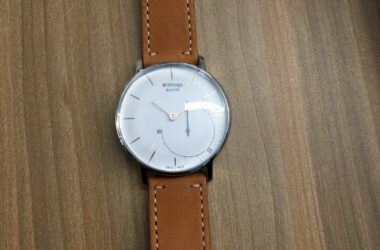The new Mac Pro is a good reminder of the capabilities, and cost, of professional hardware.
In a time when most of the attention in computing has been around miniaturization and portability, the average user—via a smartphone, iPad, or laptop—have had their computing needs met with standard-issue consumer electronic products for years. Electronic device upgrade cycles have all plateaued, with the previously indefatigable smartphone’s growth finally stalling last year1. In response, recent iterations to computing hardware have necessarily focused on luxury affordances and somewhat extraneous features.
In stark contrast, the Mac has become a more specialized computing platform, most often used in professional and academic settings where complex software and inputs2 are still required. And at the top is this new Mac Pro: a computing beast that features server-grade multi-core processors and memory, massive amounts of blazingly fast storage, enough data bandwidth and physical space for expandability, and a specially-designed case to accommodate airflow across a set of extremely powerful and power-hungry and hot components. The elitism is further compounded by an even more extravagant “Pro Display” computer monitor, and made complete with a this-is-not-The-Onion separate Pro Stand, priced for ridicule.
Stand aside, the specs and abilities of the Mac Pro do highlight the difference in hardware tailor-made for professional use to that of the average consumer, and even that of the so-called prosumer.
The term was used a couple of years back mostly in talking about cameras targeted towards photography hobbyists, who didn’t take photos for a living3 but still demand quality and equipment beyond that of standard camera lineups. These new cameras had features handed down from their more professional brethren to justify their 2× price tags, though I suspect a substantial part of the appeal is selling the idea of buying the tools to make a hobby into a career possible. Since then, the idea has spread to other gadgetry:
- Apple’s MacBook and iPad Pros, with the former getting called out for its deficiencies for professional use in its most recent iteration
- Audio equipment, particularly higher-end earphones and headphones
- Television sets, where some of the high-end features include globs of video signal processing that’s the opposite of what professionals would actually want out of their monitors
- At-home coffee and espresso machines
From the manufacturer’s standpoint, there’s plenty to like about this segment of customers: it’s a bigger market than the purely professional analog, willing to pay a bit more than the average customer4, ideally using tech that was already developed and subsidized by the highest-end professional products.
Those professional products, though, still stand worlds apart. These are the cameras that can take and buffer hundreds of photos, in-ear monitors with custom audio calibrations, and computer monitors with built-in hardware to keep its colors accurate. These features are so niche that they only make sense as a part of the cost of running a business, where that business requires a quality level a step beyond what a consumer—or prosumer—is able to accomplish with slightly less sophisticated hardware.
And as the Mac Pro demonstrates, that 10–20% of additional quality can easily run at 3–4× the price.
Tablets and laptops/desktops have peaked years ago.↩
Re: keyboards and mice.↩
Which isn’t really their fault; the smartphone camera has effectively disrupted and obsoleted the job.↩
That is, fatter profit margins.↩


